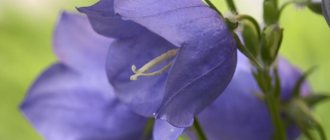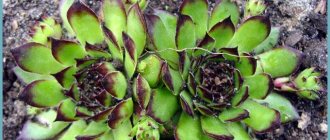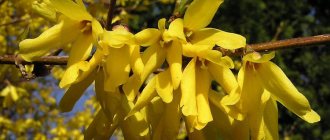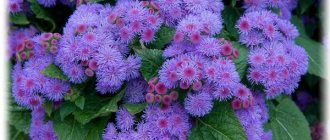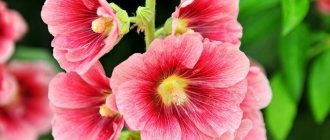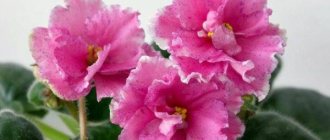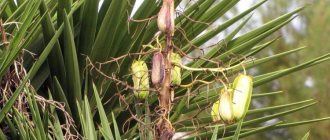The natural habitats of the vast majority of forsythia species are the Far East (our Primorye, China and Korea). And only one species, European forsythia, is found in the territory of the former Yugoslavia and Albania.
Forsythia got its name in honor of the founder of the Royal Horticultural Society, Scottish botanist William Forsyth, who brought the plant from China to Europe. By the way, that’s why its name is often written as forsythia. This genus is one of the oldest plants of the Olive family (Oleaceae).
Forsythia are very popular in Europe. They are loved because early, as soon as the snow melts, before the leaves appear, all the branches are covered with beautiful dazzling yellow bell-shaped flowers. Flowering often coincides with Easter, which is why in many countries forsythia is called the Easter tree. Its branches decorate houses and temples.
The unpretentiousness and high decorative qualities of forsythia have also attracted gardeners in our country. Despite the fact that some species are considered frost-resistant, abundant flowering is possible only under conditions of a mild winter or shelter, because flower buds are severely affected by frost.
Forsythia is good not only during flowering. This shrub is from 1.5 to 3 m high and up to 2 m wide, has a beautiful shape and large, bright, oval-shaped leaves with a serrated edge. What is important is that the plant is practically not damaged by diseases and pests (1).
Description
Let's not change generally accepted traditions - we'll start the review with a description of the external characteristics of the plant. Since forsythia looks very bright and catchy, you will never confuse it with other crops:
Forsythia flowers
- Can be a tree or shrub, length varies from 1 to 3 meters.
- The bark has a rough texture and is colored brownish-gray.
- The leaf blade is oval, simple. Sometimes it is trifoliate. The length depends on the specific type, from 2 to 15 cm.
- Flowers are bright yellow, bell-shaped. You can enjoy lush flowering in just 3 weeks.
- The fruit is a capsule. Winged seeds.
Popular varieties
6 species are grown for decorative purposes. The most common is European. It reaches two, sometimes even three meters, has a narrow crown, the shape of which resembles an egg. Thanks to this feature, the ornamental forsythia shrub can be planted 50 cm away from another representative of the Olive family. The European species is good because the buds bloom not only in Krasnodar, but also in St. Petersburg, and they feel great in the northern regions.
As for the mountainous areas, the greenest forsythia grows best there. It has dark green leaves and flowers are yellow-green. Compared to the previous variety, the branches are more powerful and grow almost vertically. The crown is spreading, the flowers reach three centimeters. This species is very sensitive to cold weather, and can bloom exclusively in the southern regions of the Russian Federation.
- Hanging. It is also called weeping, as the branches hang down as if “crying”. It is considered the most beautiful in Russia, but is found only in Crimea, in certain regions of the Caucasus.
Forsythia europaea - As a result of crossing the weeping and greenest species, hybrid forsythia was obtained. It was called average. The tall and powerful plant has straight shoots, but they droop at the edges. The hybrid variety survives even in northern regions.
- It remains to mention the species Giralda and Ovate. They have bright green leaves, the buds are planted singly. Ovate forsythia is a miniature shrub. Common varieties: Tetragold, Melissa, Dresdner.
There is also pink forsythia, but due to the specific growing conditions in our country, it is not as widespread as European forsythia.
Types and varieties of forsythia with photos and names
European forsythia (Forsythia europaea)
This species is most popular among gardeners living in mid-latitudes. This upright growing shrub can reach 200 centimeters in height. The entire leaf blades are oblong in shape and about 7 centimeters long. The color of the bell-shaped single flowers is yellow-golden.
Forsythia giraldiana
This species is very similar to European forsythia, but it is less frost-resistant. The bush can also reach 200 centimeters in height. Almost all shoots are straight, but they are colored brown-yellow and tetrahedral. Dark green elliptical leaf blades reach 10 centimeters in length. Flowering occurs in May. Graceful large pale yellow flowers have twisted petals.
Hanging or drooping or drooping forsythia (Forsythia suspensa)
This shrub with a spreading crown can reach 300 centimeters in height. Thin tetrahedral arched drooping branches have an olive or brown-red color. On old stems the leaf blades are simple, while on growth stems they are trifoliate. Large (diameter about 25 mm) yellow-golden flowers are collected in bunches of several pieces. Several forms are cultivated:
- Variegated (forsythia variegata). The color of the flowers is rich yellow. The leaf blades are pale yellow and variegated.
- Fortune (forsythia fortunei). The flowers are dark yellow in color and collected in bunches. The narrow leaf blades are trifoliate.
- Purple stem (forsythia artocaulis). Stems are dark red. At the moment of opening, the leaf plates are painted in the same color.
- Other forms : forsythia Zimbold, forsythia deceptive, forsythia hanging Fortune.
Dark green forsythia (Forsythia viridissima)
The height of the bush does not exceed 300 centimeters. Its green branches point upward. Densely growing simple leaf blades have a lanceolate-oblong shape, their upper part is jagged. They are painted dark green, reach 15 centimeters in length and 4 centimeters in width. The small bunches consist of flowers that are colored a rich yellow-green color. It is resistant to drought.
Forsythia x intermedia
This hybrid was created by crossing dark green forsythia and drooping forsythia. It can reach 300 centimeters in height. The bush begins to bloom only after it turns 4 years old. The leaf blades are usually oblong with a jagged edge, but they are also trifoliate and reach 10 centimeters in length. They are dark green, and their color remains unchanged until late autumn. The color of the flowers is rich yellow, they are collected in bunches of several pieces. Flowering occurs in April and May. This shrub grows quickly and is resistant to frost and drought. Varieties:
- Beatrix Farrand . The shrub reaches a height of 400 centimeters. The rich yellow flowers have a dark yellow stripe at the base.
- Denziflora . The height and diameter of the bush are 150 centimeters. The twisted flowers are light yellow. Flowering occurs in May and lasts 15–20 days. Does not tolerate frost.
- Spectabilis . This variety is one of the most beautiful. The height of the bush is about 100 centimeters, and its diameter is 120 centimeters. In the warm season, the leaf blades have a green color, which in autumn changes to rich yellow and purple. The diameter of the dark yellow flowers is about 45 mm, flowering begins in the last days of April.
Snowy or white forsythia (Forsythia abeliophyllum)
The height of the bush can vary from 150 to 200 centimeters. The length of the oval leaf plates is about 8 centimeters; their underside becomes purple in the summer. The flowers are white and have a yellow throat. The color of the buds is light pink.
Forsythia ovata
The height of the bush can vary from 150 to 200 centimeters. The spreading branches are yellow-gray in color. The length of the leaf blades is about 7 centimeters; in summer they are colored rich green, which in autumn changes to purple. The diameter of single flowers is about 20 mm, their color is rich yellow. This species begins to bloom earlier than others. It is fast growing and resistant to frost and drought. The most popular varieties are:
- Spring Glory . The height of the bush is about 300 centimeters. The leaf blades are green in summer, and in autumn they become variegated (from dark purple to light yellow). Lush flowering is observed in May. Large flowers have a rich yellow color.
- Tetragold . The height of the bush is about 100 centimeters. The diameter of the dark yellow flowers is approximately 30 mm. Flowering begins in the second half of April.
- Goldzauber . This variety is very valuable and popular. The large flowers are yellow-golden. Resistant to frost. Flowering begins in the second half of April and lasts approximately 20 days.
FORZITIA! PLANTING CARE FEEDING!
Planting in open ground
Since the plant has medicinal properties, every gardener is obliged to plant at least one bush in the yard. In order for the shrub to take root well, it is planted either before the onset of frost or in the spring. It grows well in the shade, but it is advisable to choose a sunny area for planting. Naturally, there should be no drafts or strong gusts of wind.
Note! The quality of the soil does not play a key role, but dry, slightly alkaline soil is preferable. Acidic soil is diluted by digging with wood ash.
- Before planting forsythia, prepare a planting hole 50 x 50 x 60 cm. The seedling is placed in such a way that the root system is at a depth of 30-40 centimeters.
- Be sure to make drainage from 15-20 cm broken bricks. Immediately behind it there will be a 10-centimeter layer of sand, a soil mixture of earth, peat, sand (2: 1: 1).
- 200 g of wood ash are thrown on top and a seedling is installed. The hole is filled with soil, compacted, and watered.
- Spring planting and care are no different from growing an adult plant. Forsythia is also planted in the fall according to the standard scheme, but the soil is mulched before the onset of frost. Additionally, the bush is covered with material that allows air to pass through well. Then the kidneys will not rot.
Spring may arrive in your home as early as January. To do this, cut a sprig of forsythia and place it in warm water. After a few days, the buds will swell and green leaves will appear.
Planting and caring for Forsythia
Planting and caring for Forsythia begins with choosing a propagation method. Bush cuttings, layering and seeds are available for sale. The latter are sown in mid-spring with the expectation of 30-50 percent germination.
Considering the spreading nature of future shrubs, seeds are planted at least a meter apart from each other. 5-8 grains are buried in a hole. If several germinate, the strongest shoot is left.
In Russia, propagation by seeds begins with planting them in home or greenhouse trays. Already strong bushes are transplanted into the garden. As a rule, this occurs in the 2nd year of life, but it can also occur in the 1st year.
Up to 12 months, the shoots stretch 4-8 centimeters. In the second year of life, the Forsythia bush reaches a height of 12-30 centimeters, and at 3 – almost meters.
The Forsythia flower forms at least in the 6th year of life. So, you will have to wait for the beauty of the plant. The first 6 years are just trunks with rough grayish bark and unremarkable leaves. In the first year after transplanting the bush into open ground, you need to cover the soil with a layer of fallen leaves. She will warm Forsythia without letting her die.
Reproduction of Forsythia by layering begins with cutting the bush. A stump remains. Over the summer, flexible, healthy and young branches grow on it. In autumn they are placed in furrows in the ground. The branches bent to the soil should go 2-3 centimeters into it.
To prevent elastic branches from straightening, they are fixed with wire arches. They are placed above the shoots, sprinkled with earth. Being located on top, the soil gives additional weight.
Before propagating Forsythia, the soil is loosened by layering. Fine crushed stone is poured into the bottom of the furrows in the ground. It serves as drainage and prevents branches from rotting. Already in the spring they will give roots and young shoots.
So, several more daughter bushes can grow around the mother bush. However, given the spreading nature of Forsythia, the branching branches should be long. These grow over the summer, usually in hanging forms. We'll talk about them in the next chapter.
Most often, the heroine of the article is propagated by cuttings. They can be prepared in winter. This is relevant for Siberia. In central Russia, cuttings are prepared in the summer.
In the first case, the branches are stored until spring in a cool and humid room. During summer propagation, the cuttings are immediately placed in the soil. It is recommended to root in film greenhouses. Their branches produce roots within a month.
For one cutting, 2 internodes are enough. About half a centimeter of the trunk remains under the bottom one. The lower leaves are torn off the branch, and halves are cut off from the upper ones.
Wasting resources on greens prevents cuttings from taking root. When they appear, the plants are covered with leaves and left to overwinter in a greenhouse. It is recommended to take Forsythia out into the open air for 2 years.
It is more difficult to propagate from winter cuttings. The shoots have time to become woody and are less active vegetatively. Summer cuttings are green, flexible, and full of juices for fast growth.
Forsythia is easy to propagate from cuttings
Having taken root, the heroine of the article does not cause any trouble. The bushes feel equally good both in the shade and in the scorching sun. Drought and frost are also equivalent for Forsythia; it experiences both weather phenomena.
They rarely get sick and are resistant to parasites. Pruning Forsythia to form a crown is easily tolerated by the flower, as is cutting. The bushes quickly gain back the lost mass.
True, there is a catch in this. If you cut the shoots too short, Forsythia will devote all its energy to forming greenery. You can wait for flowering, but you won’t be able to wait.
The heroine of the article favors alkaline soils. Natural alkali - limestone and other sedimentary rocks, for example, shell rock. Accordingly, you need to either enrich the soil with chalk masses, or plant the plant in a substrate that already contains them.
Subtleties of care
Growing forsythia and other shrubs has no significant differences:
- Watering. If it rains regularly in summer, you can do without watering. In case of prolonged drought, a bucket of water is poured under each bush 2 times a month. After this, the area is weeded to ensure normal air exchange.
- Fertilizers. They feed three times during the season: at the beginning of spring, rotted manure is applied, and in April, mineral fertilizer is applied. After flowering, forsythia is fed with Kemira-universal.
Features of growing forsythia
The plant does not require careful care, but there are some nuances that will affect the growth and development of the bush. Below is a list of some of them:
- The shrub will respond with more intense flowering to the presence of abundant lighting, but growing in partial shade is also allowed;
- The soil for forsythia must contain lime;
- Goes well with green conifers;
- The plant will sparkle with new colors in the autumn, which will only add to its decorative value.
How does reproduction occur?
At home, forsythia reproduces by vegetative methods. For example, cuttings. Cuttings 15 cm long are cut in June, the lower leaves are torn off and the cut site is treated with Kornevin. If it was not possible to prepare cuttings in the summer, you can take the woody elements in October and plant them in open soil, covering them with leaves and leaving 2-3 buds for the winter.
Forsythia Giralda
When the snow melts, forsythia is ready for propagation by cuttings in the spring. It is enough to remove the foliage and the growth of young shoots will immediately begin. In the fall you will receive full-fledged seedlings.
To obtain layering, look for a stem that is as close to the surface as possible. The base is tied with wire, the bark is cut in the place facing the ground. The fixed stem is covered with a nutrient mixture. It will take root quickly. In spring, the cuttings are separated from the parent tree. Flowering will begin in about a year.
You can also try growing forsythia from seeds. However, this method is very complicated. As a rule, breeders and experienced gardening specialists resort to it.
Why doesn't forsythia bloom?
There are several reasons that inhibit the formation of buds. These include:
- saline heavy soil (secondary symptom - many deformed, underdeveloped shoots and leaves, slow growth of the bush);
- stagnation of water in the hole can be easily determined by the state of the plant crown (foliage falling for no reason, a large number of yellowed leaf blades, rotting of the root node of the tillering);
- improper sanitary pruning (many buds were cut off);
- lack of nutrients in the soil;
- freezing of the buds in winter;
- presence of pests.
Having neutralized the above problems, flower growers manage to activate the formation of buds in 83% of cases. In cases where the plant continues to develop slowly and does not produce flowers, the owner decides on additional feeding with potash fertilizers.
Despite rapid advances in modern breeding, scientists have still not been able to develop a specific hybrid. There are only about 8 species in the Royal Botanical Directory, where each forsythia has a photo and description.
Who is forsythia afraid of?
The shrub is highly resistant to diseases and pests. Sometimes it is affected by bacteriosis. Unfortunately, the disease is incurable, and the diseased bush will have to be dug up along with the root system. What does forsythia look like when affected by moniliosis? Brown spots appear on the leaves. The affected areas have to be removed. Occasionally there are problems associated with nematodes. The soil is disinfected with carbation.
The most vulnerable point is the buds that appeared on last year's shoots. So that they do not freeze in winter, and the spring flowering is abundant and lush, before the onset of cold weather, the branches are bent to the ground and covered.
Diseases and pests
The shrub's immunity is quite strong , but forsythia can be attacked by nematodes or aphids.
The drug “Carbation” can help in the fight against the former; a strong solution of laundry soap has proven itself to be effective against aphids.
The following diseases are typical for forsythia:
- Moneliasis. The affected areas are cut off along healthy tissues.
- Bacteriosis. Unfortunately, the disease has no cure. The bush needs to be dug up and burned.
- Withering. Characterized by early yellowing and wilting of leaf blades. They are treated with the drug "Vectra".
Trimming
For the first 2-3 years, the forsythia bush is considered young, and it is not advisable to touch it. The exception is frozen shoots, which are carefully trimmed in the spring. It's a different story when it comes to trimming mature plants. Let's look at how to prune forsythia with minimal consequences for the bush.
The need for spring pruning arises after a frosty winter, when young shoots die. However, the procedure itself is very useful, because it is in March-April that the foundations of the future bush are laid. Another argument in favor of spring pruning is that the branches are clearly visible, and it will be easier for you to get deep into the bush.
In the summer, when the bush has faded, the branches are cut off by about half. Dry, old shoots are shortened to 5 cm from the soil. Over time, buds will appear on the stumps, which will give rise to young shoots. When cutting green forsythia, it is given the shape of a ball or bowl. Do you want to form a hedge? Carry out rejuvenation every 3 years, pruning the plant by 50%. The bush will become denser, many young branches will appear.
How and when to prune
Pruning is an important step in caring for shrubs. Regular pruning will help not only give the crown a beautiful shape, but also maintain the health and youth of the forsythia.
Thinning pruning
The shoots of the bush tend to branch actively and develop quite quickly, as a result of which the crown can thicken excessively.
To avoid this, thinning pruning , the purpose of which is to remove all weak shoots growing inside the bush.
Anti-aging pruning
Its purpose is different - to remove old shoots, which take too much strength from the root system of the shrub, which is why flowering suffers.
Sanitary and formative pruning
The purpose of these procedures is to rid the forsythia of diseased or damaged shoots (sanitary pruning) and give the crown a neat round shape (formative pruning).
What place does forsythia occupy in landscape design?
Forsythia is widely used in park and garden design. In combination with other beautifully flowering crops, it creates integral compositions. It is used to create hedges, as young shoots grow at incredible speed. In many European countries, hanging forsythia decorates private gardens, streets, and public gardens. Its delicate blossoms symbolize the arrival of spring.
When the trees look gray and dull, a yellow “flash” near the road, blazing like fire, immediately attracts attention. The shrub blooms very early, and caring for forsythia is not particularly difficult even for a beginner. Can be grown both in well-lit areas and in the shade. It is enough for the soil to be limed and for coniferous plants to grow nearby. Forsythia is friends with them and contrasts beautifully against their background.
Interesting! By the way, with the onset of autumn, the green foliage of the plant turns violet-purple and golden. Culture becomes attractive again and becomes highly decorative.
Possible problems
It happens that forsythia does not bloom. There may be several reasons for this:
- In heavy saline soil, shoots develop with a noticeable lag, so flowering may occur much later than the stated date.
- There is water in the planting hole.
- The pruning process has removed too many shoots and the plant is stressed.
- The winter was too cold and the buds froze.
- The plant lacks nutrients.
- Lack of flowering may be a consequence of parasite activity.
